| 9 December |
• yesterday • tomorrow |
| Optional Memorial of Saint Juan Diego Cuauhtlatoatzin |

• Cuauhtlatoatzin
• Juan Diego Cuautlatoatzin
Born an impoverished free man in a strongly class-conscious society. Farm worker, field labourer, and mat maker. Married layman with no children. A mystical and religious man even as a pagan, he became an adult convert to Christianity around age 50, taking the name Juan Diego. Widower in 1529. Visionary to whom the Virgin Mary appeared at Guadalupe on 9 December 1531, leaving him the image known as Our Lady of Guadalupe.
1474 Tlayacac, Cuauhtitlan (about 15 miles north of modern Mexico City, Mexico) as Cuauhtlatoatzin
30 May 1548 of natural causes
• 9 April 1990 by Pope John Paul II at Vatican City
• recognition celebrated on 6 May 1990 at Mexico City, Mexico
• 31 July 2002
• recognition celebrated at the basilica of Our Lady of Guadalupe, Mexico by Pope John Paul II
eagle
Let not your heart be disturbed. Do not fear that sickness, nor any other sickness or anguish. Am I not here, who is your Mother? Are you not under my protection? Am I not your health? Are you not happily within my fold? What else do you wish? Do not grieve nor be disturbed by anything. - Our Lady to Juan Diego, 9 December 1531
At the dawn of Mexican evangelization Saint Juan Diego holds a place all by himself; according to tradition, his indigenous name was Cuauhtlatohuac, "The eagle who speaks". His lovable figure is inseparable from the Guadalupe event, the miraculous maternal manifestation of the Virgin, Mother of God, both in iconographic and literary memorials as well as in the centuries-old devotion which the Mexican Church has shown for this Indian so loved by Mary. Similar to ancient Biblical personages who were collective representations of all the people, we could say that Juan Diego represents all the indigenous peoples who accepted the Gospel of Jesus, thanks to the maternal aid of Mary, who is always inseparable from the manifestation of her Son and the spread of the Church, as was her presence among the Apostles on the day of Pentecost. The information about him that has reached us praises his Christian virtues: his simple faith, nourished by catechesis and open to the mysteries; his hope and trust in God and in the Virgin; his love, his moral coherence, his unselfishness and evangelical poverty. Living the life of a hermit here near Tepeyac, he was a model of humility. The Virgin chose him from among the most humble as the one to receive that loving and gracious manifestation of hers which is the Guadalupe apparition. Her maternal face and her Saint image which she left us as a priceless gift is a permanent remembrance of this. In this manner she wanted to remain among you as a sign of the communion and unity of all those who were to live together in this land. The recognition of the cult which for centuries has been paid to the layman Juan Diego takes on a special importance. It is a strong call to all the lay faithful of this nation to assume all their responsibilities, for passing on the Gospel message and witnessing to one faith active and working in the sphere of Mexican society. From this privileged spot of Guadalupe, ever-faithful heart of Mexico, I wish to call on all the Mexican laity, to commit themselves more actively to the re-evangelization of society. The lay faithful share in the prophetic, priestly and royal role of Christ (cf. Lumen Gentium, 31), but they carry out this vocation in the ordinary situations of daily life. Their natural and immediate field of action extends to all the areas of human coexistence and to everything that constitutes culture in the widest and fullest sense of the term. As I wrote in the Apostolic Exhortation Christifideles Laici: "In order to achieve their task directed to the Christian animation of the temporal order, in the sense of serving persons and society, the lay faithful are never to relinquish their participation in public life, that is, in the many different economic, social, legislative, administrative and cultural areas, which are intended to promote organically and institutionally the common good" (n. 42). Catholic men and women of Mexico, your Christian vocation is, by its very nature, a vocation to the apostolate (cf. Apostolicam Actuositatem, 3). Therefore, you cannot remain indifferent before the suffering of your brothers and sisters: before the poverty, corruption and outrages committed against the truth and human rights. You must be the salt of the earth and the light of the world (cf. Matthew 5:13-14). Thus the Lord says once more to us today: "Let your light shine before men that they may see your good works and glorify your Father who is in heaven" (Matthew 5:16). Juan Diego too shines before you, raised by the Church to the honours of the altar; we can invoke him as the protector and the advocate of the indigenous peoples. - Pope John Paul II at the beatification of Saint Juan Diego, 6 May 1990
https://catholicsaints.info/saint-juan-diego/
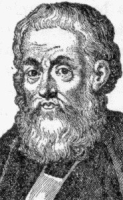
• Good Father of Mattaincourt
• Le Bon Père de Mattaincourt
Educated at the University of Pont-a-Mousson, entering at age 15. Tutor to the sons of many noble families. Augustinian Canon Regular at the abbey in Chaumousey, France. Ordained in 1589. He returned to university, became a master of patristic theology, and could recite the Summa Theologica of Saint Thomas Aquinas by heart. Reforming priest at Mattaincourt, Vosges, France, an area noted for corruption and lax attitudes to heresy; he revitalized the spiritual life of the district, and established charities and banks for the poor. Spiritual teacher of Blessed Alix le Clerc. In 1598 he founded the Daughters of Our Lady for the education of girls. Founded the Sodality of the Immaculate Conception, or Children of Mary. His attempt to found a parallel order to teach boys failed. In 1621 he was ordered to reform his order in Lorraine. In 1625 he was sent to Salm to preach missions and work against Calvinism; within six months all the fallen away Catholics had returned to the Church. Helped found the Congregation of Our Saviour in 1629 and served as its superior general in 1632. When the French government ordered him to swear allegiance to King Louis XIII he refused, and spent the rest of his life in exile in the town of Gray, Haute-Saone, France.
30 November 1565 at Mirecourt, Lorraine (modern France)
9 December 1640 at Gray, Haute-Saone (modern France) of natural causes
20 January 1730 by Pope Benedict XIII
27 May 1897 by Pope Leo XIII
man wearing a rochet, distributing pictures of the Blessed Virgin Mary and chaplets to children
https://catholicsaints.info/saint-peter-fourier/
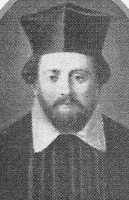
Liborio
Raised a Protestant, he studied in Mühlhausen, Leipzig, Gotha and Strasbourg, then in 1621 began studying with Jesuits in Würzburg, Germany where he converted to Catholicism. Ordained on 29 March 1625, Liborius served as chaplain in Hardheim, Germany, then as parish priest at Altenmünster, Germany a predominently Protestant city. He ministered to everyone in his city, and his example brought many Protestants to re-union with the Catholic Church. In 1631, the Protestant Swedes, fighting in the Thirty Years' War, reached Altenmünster, and Father Liborius was forced to flee the city; he hid in Reichmannhausen, which was only couple of miles away, so he could return to minister to his parishioners. On 4 December 1631 he was betrayed, captured by the Swedes, tied behind a horse, and dragged several miles to the castle of Mainberg where he was subjected to several days of torture to force him to renounce the Catholic Church; he refused. Martyr.
5 December 1593 at Mühlhausen, Unstrut-Hainich, Thuringia, Germany
• beaten to death with swords and firearms on 9 December 1631 on the River Main, Schonungen, Schweinfurt, Germany
• stripped of his priestly garb to make identification harder, and his body thrown into the River Main
• body recovered from the river by area Catholics, and buried nearby
• following the end of Swedish rule in the area, his body was re-interred in the chapel of the castle of Mainberg
• re-interred in the parish church of San Lorenzo, Heidenfeld, Germany on 15 December 1637
24 March 1974 by Pope Paul VI
https://catholicsaints.info/blessed-liborius-wagner/
• Anna Felecia Fornari
• Chiara Fornari
Novice in the Poor Clares of Todi, Italy at age 15, and took her vows under the name Clara Isabella at 16. Given to long and frequent ecstatic visions of Jesus, Our Lady, Saint Clare of Assisi, and Saint Catherine of Siena. During one of these, Jesus placed a ring on her finger, and pronounced her his "spouse of sorrow."
Stigmatist, with constant marks and periodic bleeding. Her head was weighted with a mystical crown of thorns that invisibly, but painfully, grew through the skin until the thorns popped through and fell, leaving bleeding open wounds.
Driven to depression and despair from the pain, she was tempted to apostasy and suicide. Toward the end of her short life she even lost the memories of her earlier, consoling visits from Heaven. However, not long before she died the memories of those earlier, ecstatic times returned to her, her joy in God returned, and she went happily into the next life.
25 June 1697 at Rome, Italy as Anna Felicia Fornari
9 December 1744
https://catholicsaints.info/blessed-clara-isabella-fornari/
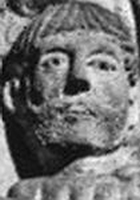
• Nectarius of Limagne
• Nectarius of Senneterre
• Nectarius of St-Nectaire
• Nectaire, Necterius
Missionary sent by Pope Saint Fabian to take the faith into Gaul in the 3rd century, centering his work around the modern Auvergne, France. Worked with Saint Austremonius, Saint Gatianus of Tours, Saint Trophimus of Arles, Saint Paul of Narbonne, Saint Martial of Limoges, Saint Dionysius of Paris, Saint Baudimius, Saint Auditor of Saint-Nectaire and Saint Saturninus of Toulouse; may have been related to Baudimus and/or Auditor. Turned a pagan temple into the new Christian church. Martyr.
• murdered by the pagan chieftain Bradulus
• the Benedictine priory of St-Nectaire, France was built over his grave
• the small town of Saint-Nectaire, Puy-de-Dôme grew up around it, giving it's name to a world famous cheese
Saint-Nectaire, Puy-de-Dôme, France
https://catholicsaints.info/saint-nectarius-of-auvergne/
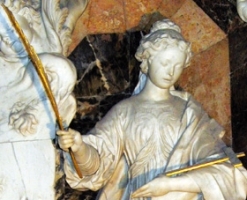
Locaie of Toledo
Slave. Beaten and imprisoned for refusing to denounce her faith during the Diocletian persecutions. Scheduled for torture and either apostasy or martyrdom, she learned of the abuse being suffered by the 13 year old Saint Eulalia of Merida. Leocadia prayed for God to remove her from a world where such evil occurred; she died soon after, of no particular cause, without being touched by her torturers. Ancient and popular cultus developed in Toledo, Spain.
• c.303 at Toledo, Spain of (super) natural causes
• relics translated 26 April 1589
• Toledo, Spain, city of
• Toledo, Spain, archdiocese of
• woman holding a tower, indicating she died in prison
• woman holding a cross and palm
https://catholicsaints.info/saint-leocadia-of-toledo/
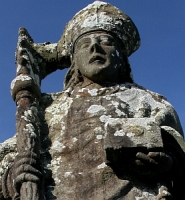
• Budoc of Dol
• Beuzec, Beuzeg, Beuzegig, Bozeg, Bozel, Budeaux, Budeg, Budeux, Budock, Budog, Budogan, Budok, Budokus, Buoc
Born a prince, the son of a king of Brittany; his mother was Azenor, princess of Brest, France. Legend says that his mother was set adrift in a cask, and that Budoc was born at sea with Saint Brigid of Ireland in attendance. Educated in a monastery near Waterford, Ireland. Abbot at Youghal, Ireland. Bishop of Dol, Brittany for 26 years. Several places in Devon and Cornwall in England are named after him.
in Brittany (part of modern France)
• castaways
• fishermen
• sailors
• Plourin, France
• Plymouth, England
https://catholicsaints.info/saint-budoc-of-brittany/
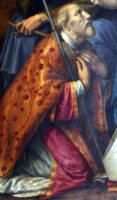
Cyril, Siro
Evangelized and served as first bishop of Pavia, Italy in the 1st century; tradition says that he was appointed by the Apostles, and an old legend says that he was the boy with five loaves who appears in the Gospels. Worked with Saint Juventius of Pavia. Fought Arianism.
relics in the cathedral of Pavia, Italy
• Pavia, Italy, city of
• Pavia, Italy, diocese of
• bishop trampling a basilisk (symbol of Arianism) underfoot
• bishop enthroned between two deacons
• with Saint Juventius of Pavia
https://catholicsaints.info/saint-syrus-of-pavia/
Daughter of Saint Gregory of Nazianzen the Elder and Saint Nonna. Sister of Saint Gregory of Nazianzen and Saint Caesarius of Nazianzen. Married, and mother of three. Twice miraculously cured of serious maladies, one of which resulted from being trampled by a team of mules which broke bones and crushed internal organs, and the other whose symptoms included headaches, fever, paralysis, and repeated coma. Each was cured by the strength of her prayer.
c.375 of natural causes
• against bodily ills
• against illness
• against sickness
• sick people
https://catholicsaints.info/saint-gorgonia/
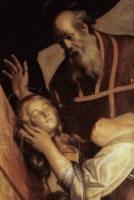
Daughter of an imperial Roman senator. Convert. Spiritual student of Saint Martial of Limoges. Betrothed in an arranged marriage, she said that she wanted to devote herself to God; her fiancee refused to believe it, assumed she had another lover, and killed her. Martyr. Possibly apocryphal.
beheaded in Limoges, France
• woman with crown and palm
• holding her severed head
• with Saint Martial of Limoges
https://catholicsaints.info/saint-valeria-of-limoges/
Auditeur
Missionary sent by Pope Saint Fabian to take the faith into Gaul in the 3rd century, centering his work around the modern Auvergne, France. Worked with Saint Austremonius, Saint Gatianus of Tours, Saint Trophimus of Arles, Saint Paul of Narbonne, Saint Martial of Limoges, Saint Dionysius of Paris, Saint Baudimius, Saint Nectarius of Auvergne and Saint Saturninus of Toulouse; may have been related to Baudimus and/or Nectarius.
Saint-Nectaire, Puy-de-Dôme, France
https://catholicsaints.info/saint-auditor-of-saint-nectaire/
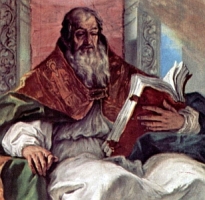
Bishop of Verona, Italy. Made public confession of his faith during the persecutions of Diocletian, for which he he was harassed, beaten and run out of town. He eventually returned to resume leadership of his flock.
c.320 at Verona, Italy of natural causes
https://catholicsaints.info/saint-proculus-of-verona/
AEthelgifu of Shaftesbury
Princess, the daughter of King Alfred the Great. Nun. With her father's help, she founded and served as first abbess of Shaftesbury Abbey in Dorset, England.
896
https://catholicsaints.info/saint-ethelgiva-of-shaftesbury/
Sixth century monk at Périgueux, France. In late life he became a hermit on the banks of the River Dordogne. Saint Gregory of Tours wrote a biography of him.
586 of natural causes
https://catholicsaints.info/saint-cyprian-of-perigueux/
Late 7th century abbess in Jouarre Abbey, diocese of Meaux, France.
relics in the abbey church at Nesle-la-Reposte, diocese of Troyes, France
https://catholicsaints.info/saint-balda-of-jouarre/
First century convert. Spiritual student of Saint Paul the Apostle. One of the 72 disciples sent out to spread the faith at the beginning of the Church. Bishop.
https://catholicsaints.info/saint-caesar-of-korone/
Wolfeius of Holme
Hermit at Saint Benet Hulme in Norfolk, England.
c.1000
https://catholicsaints.info/saint-wulfric-of-holme/
First century convert. Spiritual student of Saint Paul the Apostle. One of the 72 disciples sent out to spread the faith at the beginning of the Church.
https://catholicsaints.info/saint-cephas/
Third century bishop of Apamea, Syria. Worked against the Montanist and Kata-Phrygian heresies.
https://catholicsaints.info/saint-julian-of-apamea/
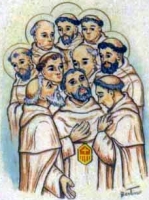
The memorial of ten Mercedarian friars who were especially celebrated for their holiness.
• Arnaldo de Querol • Berengario Pic • Bernardo de Collotorto • Domenico de Ripparia • Giovanni de Mora • Guglielmo Pagesi • Lorenzo da Lorca • Pietro Serra • Raimondo Binezes • Sancio de Vaillo •
https://catholicsaints.info/blessed-mercedarian-fathers/
Twenty-four Christians murdered together in North Africa for their faith. The only details to survive are four of their names - Bassian, Peter, Primitivus and Successus.
https://catholicsaints.info/martyrs-of-north-africa-9-december/
Seven martyrs crucified in 297 in Samosata (an area of modern Turkey) for refusing to perform a pagan rite in celebration of the victory of Emperor Maximian over the Persians. They are - Abibus, Hipparchus, James, Lollian, Paragnus, Philotheus and Romanus.
crucified in 297 in Samosata (an area in modern Turkey)
https://catholicsaints.info/martyrs-of-samosata/
Thousands of people were murdered in the anti-Catholic persecutions of the Spanish Civil War from 1934 to 1939. I have pages on each of them, but in most cases I have only found very minimal information. They are available on the CatholicSaints.Info site through these links:
• Blessed Carmen Rodríguez Banazal
• Blessed Dolores Broseta Bonet
• Blessed Estefanía Irisarri Irigaray
• Blessed Isidora Izquierdo García
• Blessed José Ferrer Esteve
• Blessed José Giménez López
• Blessed Josefa Laborra Goyeneche
• Blessed Josep Lluís Carrera Comas
• Blessed Julián Rodríguez Sánchez
• Blessed María Pilar Nalda Franco
• Blessed Recaredo de Los Ríos Fabregat
• Bernhard Mariea Silvestrelli
• Michaela Andrusikiewicz
CatholicSaints.Info Portable Edition